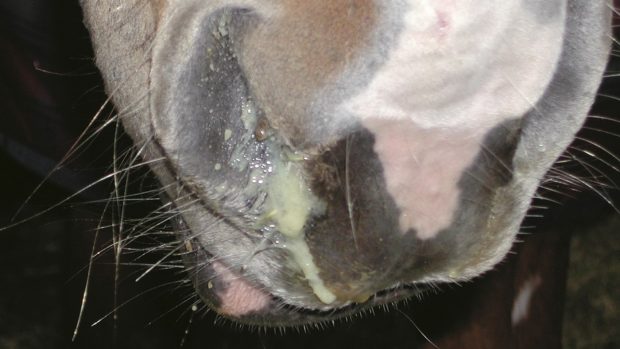Increasing pressure to cut down the number of ponies in the New Forest has seen the introduction of new voluntary grading scheme
Drastic action to cut back the number of ponies roaming the New Forest looks set to pay dividends with a sharp fall in the number of stallions and breeding mares in the area.
With the forest unable to sustain a huge pony population, there has been increasing pressure on the more than400 active commoners to cut down their stock.
At its peak, the forest has been home to more than 4,000 ponies and in recent years there have been concerns about over-grazing, road accidents on the congested routes through the area and serious worries about the welfare of the animals themselves.
At the stallion grading held in April, some 34 stallions were selected. Previously the stallion population ran to more than 120.
Following action by the Verderers, which is the only organisation able to control the stallions in the forest, stallions are only allowed roam for a limited period.
Voluntary grading scheme
To help identify the best feral mares, entries close next week for a voluntary grading scheme which will be piloted this summer to assess conformation, action and type. Free passports will be given to successful mares and foals.
Dionis Macnair of the New Forest Pony Society says that cutting down the amount of time stallions are allowed on the forest has made them more difficult to handle, but the measure is vital for the future of the breed.
“They tend to go out chasing everything around and it doesn’t test their ability to live out through the winter. Everything is certainly much calmer if you leave them living out, but this needed to be done.”
Efforts by the commoners has seen the mare population fall by as many as 600 animals and while a number of these have been sold off the forest as riding ponies, a proportion of them have been culled.
Supporters of the breed say a ceiling of between 2,500-3,000 animals is all the forest can sustain and the number of mares must still fall by another 400.
The aim is to raise the standard of the breeding mares and cut down on the number of foals born in the spring – a glut of the ponies has made selling difficult and seen foal pricesfall to as little as £1.
“We really need to cut out the ones who are not born in May. Any foals born early or late do not do the mares any favours,” said Dionis Macnair.
Versatile native breed
Extolling the virtues of this versatile breed – a demonstration at Windsor Horse Trials showed New Forest ponies in action at polo, eventing, barrel racing, dressage and driving – Dionis Macnair says the hope is that more people will buy foals with the prospect of keeping them to break in as riding ponies.
The New Forest Pony Society is also targeting colleges with the hope of getting them to take on youngstock to give students first hand experience of breaking and producing ponies.
The New Forest Sales take place on the first Thursday of every month from September at Beulieu Road, Lyndhurst.
A list of ponies for sale is also available from the New Forest Pony Society (tel: 01425 402272) or visit www.newforestpony.com
Read other New Forest stories:




